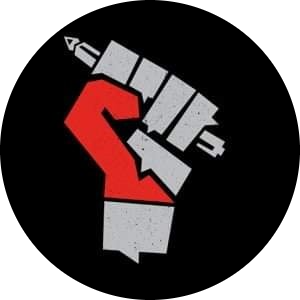State control, whether exercised by Islamabad or its neighbouring city, has exploited the consciousness of the public through mass media, educational apparatus, institutional tools, injection of violence, and ideological imprisonment through fear, religion, poverty, as well as physical coercion.
In Pakistan, whenever a horrific incident occurs like that of child abuse, gender-based-violence or enforced disappearance, it sees the limelight for a day or two followed by the same monotony of press conferences and talk shows. The state exercises complete control of digital and print media, zeroing in to divert the attention from real issues at hand, while leaving close to no room for debate and criticism. For developing countries like ours which are undergoing transition from digital to the post digital world, media has become an essential weapon for propaganda and ideological warfare by the state.
Impinging on young minds to religiously conform to the neo-liberal way of life, the state through its ideological apparatuses, has created a hegemony.
Through the curriculum, laden with half-cooked lies about ideological and cultural history of the subcontinent, students are misled about their position in history and are, therefore, subject to imprisonment from an early age. Impinging on the naive young minds to religiously conform to the neoliberal way of life, the state through its ideological apparatuses creates a hegemony. Out of syllabus questions and criticism of any kind is unwanted. Thus, citizens of the nation are trained never to question the status quo; rather, accept its legitimacy and lawfulness through their hearts and souls.
State narrative holds more significance and is comparatively easier to propagate in the core i.e. urban areas of Punjab and Sindh. These metropolitan cities with large middle class bases constitute what is often referred to as the ‘mass society’ in social science theories. Mass societies are easier to manipulate due to excessive atomization and alienation of its communities which have often migrated from rural areas decades earlier and are now culturally impoverished and eager to belong. Educational campaigns promising unification and a ‘single national identity’ adorned with patriotic zeal and zest are directed at this segment of population and very rightly so. The state gets its legitimacy from over here and therefore finds no need to invest in the development of educational infrastructure in the peripheral regions where it is often met with staunch resistance and scrutiny.
In regions like ex-Fata, rural Sindh, most of Balochistan, parts of lower Punjab, Gilgit and Kashmir, there are no avenues for higher education, apart from a few inefficient institutions. Let’s have a look at these peripheral areas.
Owing to a few educational opportunities in the region, Pashton nationalistic movements are strong, organized and led by an educated youth. They have flourished in past, under the exceptional leadership of Bacha Khan. History and historical circumstances in Afghanistan have also influenced these movements due to a shared ethnicity, language, sentiment and culture.
Religious elite and clergy of madrassas have time and again worked in cahoots with the state to radicalise the populace by depriving them of modern education and leaving them susceptible to state agendas.
Yet, the students find themselves ensnared in a landscape riven by terrorism and religious extremism either due to historical circumstances or by the state. In ex- Fata, only 5% of the students make it to university – the stats even lower for the females. With the introduction of radical ideologies and rise of Taliban, the situation has only deteriorated. Presently, ex-Fata does not have a single medical or engineering college nor any government school. Prolonged rule of the Taliban has left behind an immense fear among people. Religious elite and clergy of madrassas have time and again worked in cahoots with the state to radicalise the populace by depriving them of modern education and leaving them susceptible to state agendas.
The state has launched an all out war against its own people and those who dare question are vilified as ‘foreign agents’ and ‘traitors.’ The voice of Baloch and Pahtoon masses are blacked out on mass media which keep rocking to the beat of ISPR.
Due to the geographical landscape of Balochistan, population is mostly scattered except for the city of Quetta. Only a handful of well-organised Baloch and Pashtun radical movements are in place because of a largely underdeveloped society. The state has launched an all out war against its own people and those who dare question are vilified as ‘foreign agents’ and ‘traitors.’ The voice of Baloch and Pahtoon masses are blacked out on mass media which keep thumping to the beat of ISPR. The state handpicks its favourite politicians and installs these puppets in provincial and national assemblies while the masses continue to boycott these engineered and pre-decided elections demanding complete autonomy. For years, the state of Pakistan has plundered the resources of Balochistan without having to spend a penny on its native people. The whole of Gwadar has been leased out to China without the consent of the local populace who will not be getting the fruits of these ‘developments’.
The political and economic elite of Sindh has ideologically impoverished the largest metropolitan of the country. Dynastic politics has only resulted in acute poverty and rampant illiteracy. Rural regions have been left to the mercy of God while a dire water crisis paralyses the province. Many progressive and working class political parties are struggling to organise the biggest workforce of the country as well as students, women and farmers, but are met with strong resistance by established parties as well as the industrial elite.
The ongoing economic crises, huge budget cuts in public health and education, and shrinking social amenities call for the people to get organised behind grass root worker movements and break the hegemony of the state once and for all.
The writer studies International Relations at BZU Multan.




